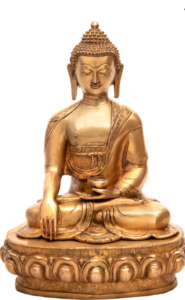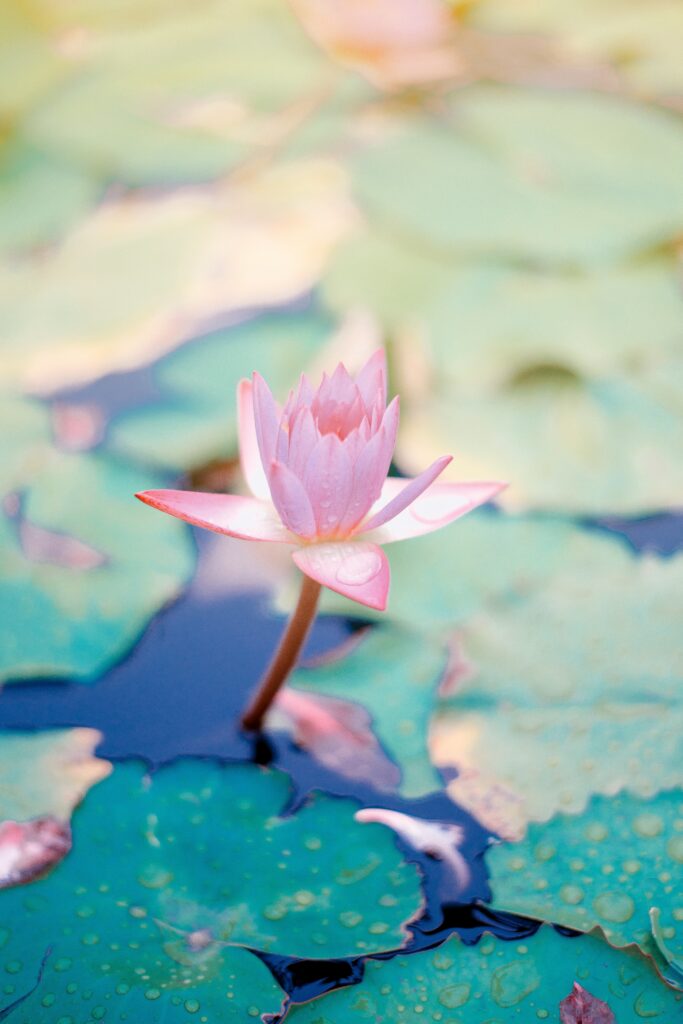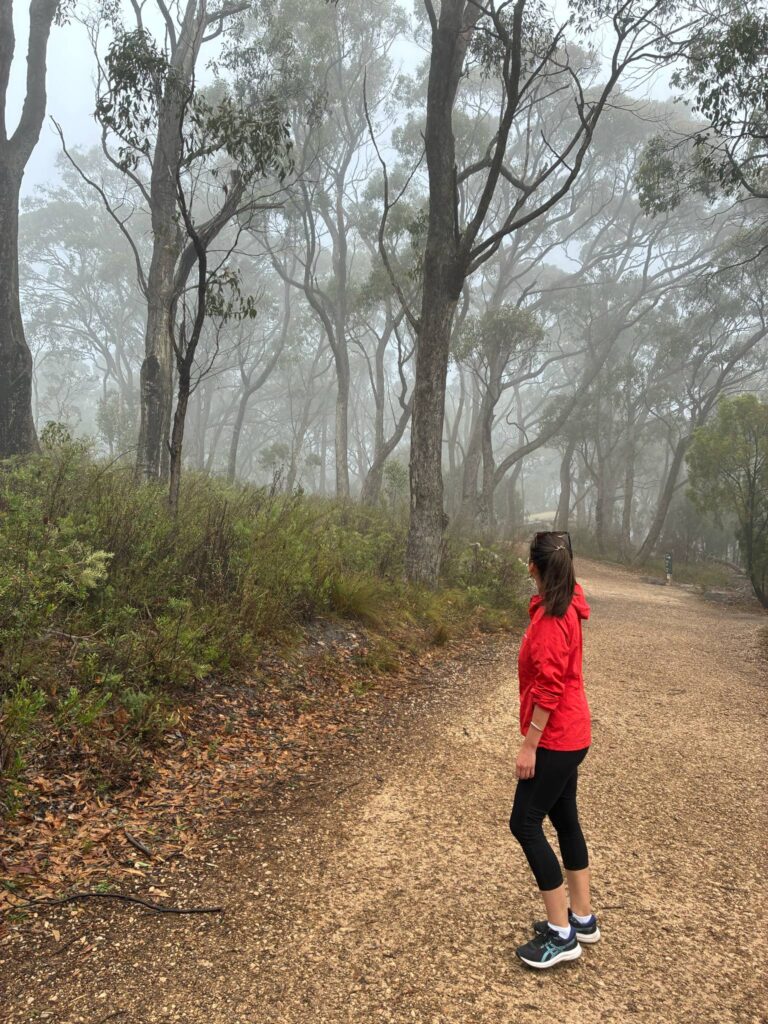My Journey Into Grounding
For years, I had no idea what “grounding” really meant. I imagined it had something to do with being “down to earth” or maybe… working in the garden. Yes, that’s how ungrounded I was.
I was also completely disconnected from my body. Don’t get me wrong—I knew it was there, especially when I couldn’t sleep or eat due to stress and overwhelm. Pain has a funny way of demanding our attention, so I assumed I was in tune with myself. I couldn’t have been more wrong.
The truth? I was absent-minded. I couldn’t relax for years. I was restless, emotionally vulnerable, and constantly overstimulated—too sensitive, too empathetic, too scattered. Grounded? Definitely not.
How do I know that? Because everything changed when I began practicing mindfulness regularly. Slowly but surely, I stopped overthinking. I stopped letting my energy be pulled in ten different directions. I developed focus. I began to feel calmer, more stable. I even realized I had feet—feet that could root me, support me, hold me steady if I just allowed myself to slow down and rest.
I went from someone who once googled, “What is grounding?” to a woman writing this article to help you experience this beautiful, life-changing practice for yourself.
🌱
So…What Is a Grounding Meditation?
Grounding meditation is a gentle yet powerful mindfulness practice designed to reconnect you with the present moment.
Through breath, body awareness, and the five senses, it offers you a return to a steady and safe internal state.
In today’s fast-paced world, where distractions are constant and stress runs high, grounding meditation serves as an anchor for the nervous system
—drawing our awareness away from the storm of thoughts and into the calm of the present moment.
I know it might sound unbelievable to some of you. “The stillness of now”? Isn’t the “now” everything, but still?
Well, for a mind constantly projecting worries into the future or dredging up past troubles, it can feel anything but still.
But when you allow yourself to focus on the present, no matter what’s going on, and give your mind a break, you’ll discover that there is stillness between the thoughts, between the events, between the feelings.
“Grounding is like wrapping a warm blanket around your nervous system.”
Basically: Grounding Technique is especially useful during emotional overwhelm, anxiety spikes, or when feeling mentally scattered. Think of it as your personal reboot button.
🌱
Why Does Grounding Feel So Good? (Here’s What Neuroscience Says)
First of all, grounding meditation works by calming the body’s stress response.
Hence, when we ground, we regulate the vagus nerve — the key player in the parasympathetic nervous system. This helps us shift out of fight-or-flight into rest-and-digest.
Neuroscientist Andrew Huberman explains:
“Deliberate control of breathing is the fastest, real-time tool for shifting your state from stress to calm.”
Huberman Lab Podcast: How to Control Your Stress in Real Time
🌱
Benefits of Grounding Meditation
1. Soothes the Nervous System
Grounding turns down the volume on the body’s stress response, helping you breathe deeper and feel safer.
2. Improves Sleep
By lowering nighttime anxiety and tension, grounding supports deeper, more restorative sleep.
3. Enhances Emotional Stability
It creates distance between you and your triggers, so you’re less reactive and more responsive.
4. Boosts Mental Clarity & Focus
By anchoring your attention to the present moment, grounding helps reduce mental fog and improves concentration.
5. Supports Physical Well-Being
Grounding has been linked to reduced inflammation, better heart health, and even lower pain perception.
🌱
Time to Practice! Here is your 5-Minute Grounding Meditation
Step 1: Sit or stand comfortably.
Let your feet make contact with the ground. Straighten your spine gently.
Step 2: Take three deep breaths.
Inhale through the nose for 4 counts. Hold for 2. Exhale slowly through the mouth for 6 counts.
Step 3: Tune into your five senses:
- 🌟 Sight: Name 5 things you see.
- 🌹 Touch: Notice 4 things you can feel.
- 🎵 Sound: Identify 3 things you hear.
- 🥜 Smell: Breathe in and notice 2 scents.
- 🍓 Taste: Observe 1 taste in your mouth.
Step 4: Breathe normally and notice how you feel.
Let your breath settle and simply observe.
Step 5: Gently return to your day.
Wiggle your fingers and toes. Thank yourself for taking this moment.
🌱
Bonus Tip: Journaling Integration
After your practice, take 2 minutes to write down:
- What sensations did you notice?
- What changed in your mood or body?
Tracking these reflections helps you notice subtle progress and deepens self-awareness.
🌱
From Chaos to Calm
Remember, grounding meditation doesn’t require a quiet room, incense, or hours of free time. All it takes is a few conscious breaths and a willingness to reconnect.
“What wires together, fires together.” — Dr. Joe Dispenza
Indeed, the more often you practice grounding, the more naturally your body will return to calm in moments of stress. You’re not just calming the mind — you’re reshaping your brain.
So next time you feel untethered, try pausing… and grounding. Your nervous system will thank you.
🌱
Time for a Story…
🪷 The Buddha and the Earth Witness Mudra
When Siddhartha Gautama sat under the Bodhi tree, determined to reach enlightenment, he was confronted by Mara—the tempter—who tried to sway him with fear, doubt, and distraction. Mara challenged his right to awaken, asking, “Who will speak for you?”
In silence, Siddhartha reached out his right hand and touched the earth. This gesture, known as the Bhumisparsha Mudra, or earth-touching gesture, called the Earth to witness his lifetimes of compassion and spiritual practice.
The Earth responded, trembling slightly, and bore witness to his truth. Mara was defeated, and Siddhartha became the Buddha—the awakened one.
This story reminds us that when doubt, fear, or chaos arises, we can turn to the grounding presence of the Earth. Just like the Buddha, we can anchor ourselves in truth, stability, and inner strength by simply being present, connected to the ground beneath us.
If you feel inspired, try the Bhumisparsha Mudra — the Earth-Touching Gesture.
- Sit cross-legged in a comfortable meditation posture.
- Rest your left hand on your lap, palm facing upward.
- Gently place your right hand on your right knee, with your fingertips lightly touching the ground.
- Close your eyes, lengthen your spine, and take a few deep breaths.

This mudra symbolises grounding, truth, and calling the Earth to witness your inner strength. Practicing it helps anchor you in the present moment, release fear or doubt, and reconnect with your calm, unwavering center.
Interested in Further Reading? Here is what I would recommend:
-
-
Mindfulness meditation: A research-proven way to reduce stress – American Psychological Association (APA)
-
What Happens When You Meditate – Stanford Magazine
- Hypnotherapy for anxiety – Aikyam Healing
-




